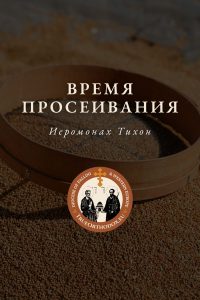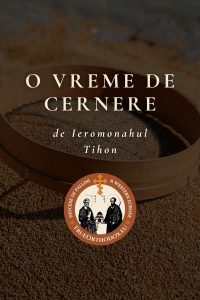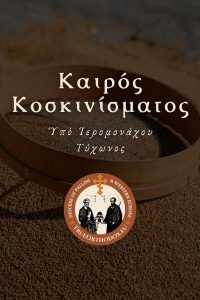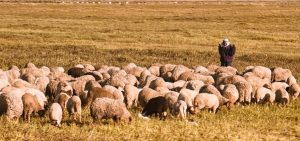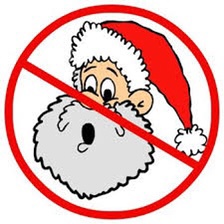Vladimir Moss: The mission of ROCOR and the Catacomb Church – a historical retrospective of the development of relationships
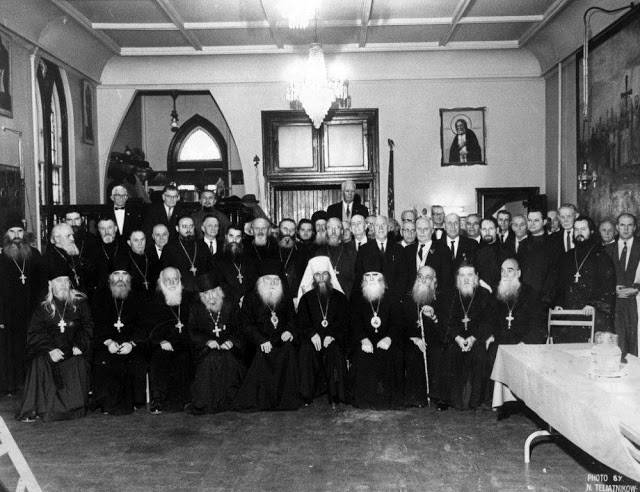
Vladimir Moss: The mission of ROCOR and the Catacomb Church – a historical retrospective of the development of relationships
The thesis of this Report is that since its foundation in 1920 the Russian Church Abroad has remained on the right path as long as it has acknowledged itself to be a part of the True Russian Church in the Homeland and has rejected three temptations: (A) the temptation of ecumenism coming from outside the Russian Church, (B) the temptation of recognizing the false sergianist church of the Sovietized Moscow Patriarchate as the “Mother Church” in the Homeland, and (C) the temptation of recognizing itself as having dominion over the True Church inside Russia. I shall examine each of these temptations in turn, from a historical point of view.
A. The Temptation of Ecumenism. It is a striking fact, and surely no coincidence, that the Higher Church Authority of the Russian Church Abroad was formed at precisely the time and place that the heresy of ecumenism was first officially proclaimed in the Orthodox Church – Constantinople in 1920. For in January, 1920 Metropolitan Dorotheus, Locum Tenens of the Patriarchal Throne and his Synod issued what was in effect a charter for Ecumenism. This encyclical was addressed “to all the Churches of Christ everywhere”, and declared that “the first essential is to revive and strengthen the love between the Churches, not considering each other as strangers and foreigners, but as kith and kin in Christ and united co-heirs of the promise of God in Christ.” It then proposed several practical measures promoting unity with the heretics, including the adoption of the new calendar.
The unprecedented nature of the encyclical consists in the facts: (1) that it was addressed not to the Orthodox Churches only, but to the Orthodox and heretics together, as if they were all already equally “co-heirs of God in Christ”; (2) that the proposed rapprochement was seen as coming, not through the acceptance by the heretics of the Truth of Orthodoxy and their sincere repentance and rejection of their errors, but through other means; and (3) the proposal of a single universal calendar for concelebration of the feasts, in contravention of the canonical law of the Orthodox Church.
There is no mention in the encyclical of the only possible justification of Ecumenism from an Orthodox point of view – the opportunity it provides of conducting missionary work among the heretics. On the contrary, one of the first aims of the ecumenical movement was and is to prevent proselytism among the member-Churches. From this time the Ecumenical Patriarchate became an active participant in the ecumenical movement, sending representatives to its conferences in Geneva in 1920, in Lausanne in 1927 and in Edinburgh in 1937.
Later that year, a flotilla of ships steamed into Constantinople containing thousands of Russian emigres and the hierarchs of the Higher Church Administration of the South of Russia, including Metropolitan Anthony (Khrapovitsky) and his deputy, Archbishop Theophan of Poltava. On November 19, the HCA had their first meeting on a battleship in the middle of the Bosphorus. Metropolitan Dorotheus gave his agreement to the HCA’s decisions and the HCA of the South of Russia was transformed into the Higher Church Administration of the Russian Church Abroad. The very next day, November 20, His Holiness Patriarch Tikhon through his famous ukaz N 362 blessed the formation of such autonomous Synods of bishops in the event of their inability to communicate with the Church centre. So the Russian Church Abroad was founded at the same time and in the same place as the birthplace of the ecumenist heresy.
Within six months the Russian Synod Abroad had moved to Serbia at the request of the Russian Church. The Ecumenical Patriarchate was angry with this move because it claimed to have received the Russian Church Abroad in canonical subjection to itself. Whatever the truth of that, we may see it as providential that ROCA did not find itself in subjection to an openly ecumenist and heretical patriarchate.
Archbishop Anastasy of Kishinev, who had been appointed a member of the HCA on November 22, lived in Constantinople, and so retained contact with the Ecumenical Patriarchate. And when Patriarch Meletius introduced the new calendar in a so-called “Pan-Orthodox Council” in 1923, he protested against this innovation. He also warned Patriarch Tikhon that the innovation was not (yet) accepted by the other Orthodox Churches, after which his Holiness immediately abandoned plans to introduce it in Russia.
In 1924 the Ecumenical Patriarchate uncanonically seized control of the autonomous Polish and Finnish Churches from the jurisdiction of the Russian Church. In both Churches, the new calendar was forcibly introduced, leading to the persecution of Russian Christians who refused to accept the anathematized innovation; the struggle was especially fierce in the monastery of Valaam, where the Russian confessors were exiled to Soviet Russia and probable death in the GULAG. Meanwhile, the patriarchate entered into communion with the anathematized “Living Church” in Russia, which drew a stern rebuke from Patriarch Tikhon.
However, the Moscow Patriarchate did not officially break communion with the Greeks; and in this restraint ROCA followed the Mother Church – and the Serbian Patriarchate, on whose territory her Synodal administration lived. This restraint could perhaps be justified on the grounds that in the confusion of the times, and in the conditions of fierce persecution by the Bolsheviks, it was impossible to assemble a representative Council in order to pass judgement on the ecumenist heretics and formally break communion with them. Nevertheless, it meant that the resistance to ecumenism became divided. On the one side were the hundreds of thousands of confessors in Greece and Romania who broke all communion with the innovators, considering them to be under the anathemas against the new calendar issued by the Pan-Orthodox Councils of 1583, 1587 and 1593. On the other side were the Old Calendar Slavic Churches of Russia, Serbia and Bulgaria, who while condemning the new calendar innovation, decided to remain in communion with the innovators.
Not all the members of the Slavic Churches and ROCA agreed with the position taken by their hierarchies. Thus the theologian Archimandrite Theodosius of Karoulia on Mount Athos conducted a vigorous debate with Metropolitan Anthony on this question. Archbishop Theophan, the second hierarch of ROCA, also took the zealot line of the Greek and Romanian Old Calendarists… The Old Calendarists asked in vain for help from their sympathizers in the official Slavic Churches. Thus the leader of the Romanian Old Calendarists, Hieromonk Glykerie, concelebrated with Archbishop Anastasy in Jerusalem – but received no further help. Again, in 1934 the Greek Old Calendarists asked Metropolitan Anthony to ordain bishops for them, but he refused, choosing not to anger the new calendarist Greeks, with whom he remained in communion. Fortunately for the Greeks, the next year, 1935, three bishops from the official Church of Greece returned to the Old Calendar and took over the leadership of the Old Calendarist movement. Only the Serbian Bishop Nikolai Velimirovich helped the Old Calendarists by secretly sending holy chrism across the border into Greece.
By the late 1930s it was high time that ROCA defined its position in relation to ecumenist World Orthodoxy. However, its continued dependence on the Serbian Church, which refused to act, appears to have inhibited the Russian hierarchs. Only in relation to Moscow could ROCOR be said to have been definitely not in communion.
On August 14, 1938 an All-Diaspora Council of ROCOR consisting of 13 bishops, 26 priests and 58 laymen was convened. The Council rejected participation in the ecumenical movement, but also rejected finally breaking communion with the Churches of World Orthodoxy. Thus Bishop John (Maximovich) of Shanghai said, in his report, “The Situation of the Orthodox Church after the Great War”: “We (the faithful of the Russian Church Abroad) must firmly stand on the ground of the Church canons and not be with those who depart from them. Formerly, in order to reproach canonical irregularities in a Local Church, canonical communion with her was broken. The Russian Church Abroad cannot act in this way since her position has not been completely determined. For that reason she must not break communion with other Churches if they do not take this step first. But, while maintaining communion, she must not be silent about violations of Church truth…”
On August 16 the Council, after approving this report, confirmed that it was in de facto communion “with the present hierarchy of the parts of the Russian Church that have separated from her” while pointing out that this separation was not canonical until the All-Russian Church Authority should decide [the question] in conditions of freedom”. It also expressed gratitude to the Serbian, Antiochian and Bulgarian Churches for their support for the Russian Church Abroad.
So on the eve of the Second World War, the situation of ROCOR in relation to the other Local Churches was still not clear. This lack of clarity continued into the post-war period. Concelebrations with hierarchs of World Orthodoxy took place, albeit rarely.
It was only with the election of a new first-hierarch, Metropolitan Philaret, in 1964, together with the Ecumenical Patriarchate’s “lifting of the anathemas” against the Roman papacy in 1965, that things began to change. The Moscow Patriarchate, under KGB pressure, entered the World Council of Churches. The Serbian Church followed a little later, and in 1966 Patriarch German became a president of the WCC.
ROCOR’s attitude towards the Serbian Church now began to change. Thus on September 14/27, 1967, Archbishop Averky of Jordanville wrote to Metropolitan Philaret: “With regard to the question of the Serbian Church, whose Patriarch German is a stooge of the communist Tito, as the Serbs themselves are convinced, calling him ‘the red patriarch’. We have heard this from many clergy and laity who have fled from Serbia. How can we recognize, and have communion in prayer with, ‘the red patriarch’, who maintains the closest friendly relations with red Moscow? Cannot our Hierarchical Council make erroneous decisions? Do we in the Orthodox Church have a doctrine about the infallibility of every Council of Bishops?”
Archbishop Averky’s attitude to the Serbs was confirmed by the ROCOR Council of Bishops in a resolution marked “Top Secret” and dated May 19 / June 1, 1967, which resolved to annul the resolution of the Council of Bishops in 1964 on the preservation of prayerful communion with the hierarchy of the Serbian Orthodox Church and declared: “The suggestion of his Eminence the First Hierarch and President of the Council of Bishops Metropolitan Philaret has been accepted and confirmed, that all the Reverend Bishops of the Russian Orthodox Church Abroad should refrain from concelebration with the hierarchy of the Serbian Orthodox Church.”.
Early in 1970, Metropolitan Philaret of New York announced to the members of the ROCOR Synod that since the Serbian Patriarch German had chosen to serve as Chairman of the World Council of Churches, ROCOR should avoid joint prayer and service with him, while at the same time not making a major demonstration of the fact. Nevertheless, communion with the Serbs continued. For many hierarchs and priests of ROCOR had been brought up in Serbia, and out of gratitude felt that the Serbs should not be condemned or excommunicated. An exception was Archbishop Nikodim of Great Britain, who, though he had lived many years in Serbia, now forbade his flock from going to the Serbian Church.
To what extent was this attitude of the majority motivated by gratitude, and to what extent by fear of ROCOR’s losing its last friends in “World Orthodoxy”, is a moot point. In any case, it was contrary to the canons of the Church, which require the breaking of communion with all those in communion with heresy. Such an act would have been truly loving, for true love for the Serbs dictated that it should be pointed out into what an abyss their ecumenism was leading them, an exhortation which would have acquired greater weight by a full break in communion…
The issue came to a head in 1974, during the Third All-Emigration Council in Jordanville. St. Philaret moved for the Moscow Patriarchate to be declared graceless, but was persuaded to withdraw his motion for fear of a schism. Archbishop Anthony of Geneva gave an impassioned speech arguing for the retention of communion with World Orthodoxy. St. Philaret wrote to Protopresbyter George Grabbe that he was considering retirement because of his lack of unity with the majority of the bishops, but he was dissuaded from that. And this was fortunate for the whole Church. For in 1983 he led the whole Synod in anathematizing the heresy of ecumenism, probably the most important ecclesiastical decision of the last 70 years.
However, several of the bishops, led by Anthony of Geneva, paid only lip-service to the anathema (if that), and after St. Philaret’s death in 1985, all discipline in this respect disappeared. Anthony of Geneva told his priests to serve with the new calendarists in Greece, and he and Mark of Berlin concelebrated with the Serbs. Finally, in 1994 the Synod entered into full communion with the excommunicated and defrocked Cyprianites, officially accepting their heretical ecclesiology, which, as Bishop Gregory (Grabbe) pointed out, implicitly rejected the 1983 anathema.
There is no question that communion with the Cyprianites undermined the spiritual strength of ROCOR, and facilitated its eventual union with the MP and the rest of World Orthodoxy in 2007. Of course, the Catacomb Church in the Homeland had never been in communion with any Church of World Orthodoxy. If ROCOR had respected their communion with the Catacomb Church and “the persecuted episcopate of the suffering Russian Church”, they would have refrained from the betrayal of 1994 and from any communion with World Orthodoxy. But they did not follow the Catacomb Church, and therefore paid the highest price by falling away from True Orthodoxy.
B. The Temptation of Recognizing the MP. The last undisputed leaders of the Russian Church, Patriarch Tikhon and Metropolitan Peter, expressed themselves completely unambiguously concerning the gracelessness of the renovationists. His Holiness the Patriarch called the «Living Church» «an institution of the Antichrist», and on July 15, 1923 he anathematized it, explicitly declaring that it had no grace of sacraments. Again, Metropolitan Peter, in his epistle dated 15/28 July, 1925, declared: “In the holy Church of God only that is lawful which is approved by the God-ordained ecclesiastical government, preserved by succession since the time of the Apostles. All arbitrary acts, everything that has been done by the new-church party without the approval of the most holy Patriarch now at rest with God, everything that is now done without our approval – all this has no validity in accordance with the canons of the holy Church (Apostolic canon 34; Council of Antioch, canon 9), for the true Church is one, and the grace of the most Holy Spirit residing in her is one, for there can be no two Churches or two graces. ‘There is one Body, and one Spirit, even as ye are called in one hope of your calling; one Lord, one Faith, one Baptism, one God and Father of all’ (Ephesians. 4.4-6).”
The spiritual leaders of the Russian Church saw a close continuity between the renovationism of the Living Church and the neo-renovationism of the Sergianist church, the more so in that the first two “patriarchs” of the Sergianist church were both former renovationists. Thus St. Nektary of Optina said of Metropolitan Sergius, who was both a leader of the earlier schism and the first “patriarch” of the new schism: “The poison of renovationism is in him still”. There cannot be two Churches; and if the Catacomb Church is the true Russian Church, then the MP cannot be the true Russian Church, but must be a usurper and a fake.
By the end of the Second World War the great majority of the hierarchs and priests of the Catacomb Church agreed with this view. Although there were a few who still considered that the MP had grace, this was a small minority which did not affect the consensus view of the Holy New Martyrs and Confessors. However, ROCOR did not follow the consensus view of her Mother Church in the Catacombs. The attitude throughout the time of Metropolitan Anastasy was to reject all communion with the MP, but at the same time to retain communion with those Churches that were in communion with Moscow, and refrain from any judgement on the MP. Some former Catacomb Christians who now lived in the West, such as Professor Ivan Andreyev, lamented this lukewarm attitude of ROCOR to the MP…
The root causes of this indecisiveness go back to the immediate post-war period, when large numbers of Russian Christians fleeing to the West from Soviet Russia were joined to ROCOR. In receiving these Christians, little difference was made between those who had belonged to the Catacomb Church, and those who had belonged to the MP. Some, even including bishops, turned out to be KGB agents, and either returned to the MP or remained as “moles” to undermine ROCOR. Others, while sincerely anti-Soviet, were not sufficiently “enchurched” to see the fundamental ecclesiological significance of the schism in the Russian Church. Thus a certain “dilution” took place in the quality of those joining ROCOR in the second emigration by comparison with the first – and the problem was to get worse with the third and fourth emigrations of the 70s, 80s and 90s. This began to affect the confessing stance of the Church as a whole; even members of the first emigration had proved susceptible to deception, as when all the ROCOR dioceses in China except that of Shanghai (led by St. John Maximovich) were lured back into the arms of the Soviet “Fatherland” and its Soviet “Church”. It is not surprising, therefore, that later generations should be still more susceptible to deception. The Catacomb Church, however, had suffered so much from Soviet power and the Soviet church that for them, with a few exceptions, there could be no question of recognizing either Soviet power or the Soviet church as in any way legitimate.
Once again, the leader in this recognition of the so-called “Mother Church” of the MP was Archbishop Anthony of Geneva. It should be pointed out that this hierarch had refused to follow the Synod in leaving Yugoslavia in 1945 and had then apostasized from ROCOR to the MP. He returned to ROCOR on emigrating to Switzerland four years later – a very suspicious move which is unlikely to have happened without the “blessing” of the Soviet authorities. In October, 1976 Archbishop Anthony told me in my own house that the MP had grace, but that it did not necessarily make “good use” of this grace – as if God can be “used” and “abused” by human beings… A little later, I went to the United States to discuss this with our leading hierarchs. Metropolitan Philaret said that he (Archbishop Anthony) was wrong, but that he (Metropolitan Philaret) could do nothing about it because “I have a gun at my head” (and he pointed at his temple with two fingers). Then he counseled me to go to Montreal to talk to Archbishop Vitaly. Vitaly took the side of Anthony of Geneva… Later that year, when St. Philaret came to London, he told me that the Soviet church was under two anathemas (the anathema of 1918 against the Bolsheviks and their co-workers, and the anathema of the Catacomb Church), and that I should remain loyal to those anathemas. However, the hierarch who was with him, Paul of Stuttgart, recognized the MP, arguing this for a whole hour while St. Philaret remained silent… Only then did I understand the great podvig of St. Philaret in continuing to lead the Church while the bishops around with him (with a few exceptions) did not share his faith. It was obvious that there would be a catastrophe after his death. And there was…
Although it is now fashionable to view the last two decades of the existence of the Russian Church Abroad as a “golden age”, this is by no means the case. And the cause was clear: as the Soviet Union fell, and ROCOR decided to open parishes inside Russia, many of the ROCOR bishops proved themselves incapable of making up their minds whether it was necessary to fight the MP or help her, whether she was their friend or their enemy, their beloved mother or their hated step-mother! A leader in this process of apostasy was Archbishop Mark of Berlin, a disciple of Archbishop Anthony of Geneva, who also had appeared mysteriously in the West from the Communist East.
As ROCOR began to lose confidence in herself and the Catacomb Church as the only bearers of true Russian Orthodoxy, the accent began to shift towards the preservation, not of Orthodoxy as such, but of Russianness. This was bound to fail as a weapon against the MP. For for a foreign Church, however Russian in spirit, to claim to be more Russian than the Russians inside Russia was bound to be perceived as arrogant and humiliating by the latter (especially in the mouth of an ethnic German such as Archbishop Mark of Berlin!). And so the MP was able to mount a successful counter-attack, claiming for itself the mantle of “Russianness” as against the “American” church of ROCOR.
As a result of all this, at the very moment, in 1990, when ROCOR returned to Russia and was called by God to enter into an open war with the MP for the souls of the Russian people on Russian soil, she found herself tactically unprepared, hesitant, unsure of her ability to fight this great enemy, unsure even whether this enemy was in fact an enemy. And this attitude guaranteed the collapse of the mission; for “if the trumpet gives an uncertain sound, who will rise up and prepare for battle?” (I Corinthians 14.8). Looking more at her enemies than at the Lord, she began, like the Apostle Peter, to sink beneath the waves. Many even began to think that it was time to “forgive and forget” and join the MP; for “if you can’t beat them – join them!” And so the MP which, at the beginning of the 90s had been seriously rattled, by the middle of the decade recovered her confidence and her position in public opinion.
The problems had begun on May 3/16, 1990, when the ROCOR Synod under the presidency of Metropolitan Vitaly (Ustinov) issued a statement that was in general strongly anti-MP, but which contained the qualification that there might nevertheless be true priests dispensing valid sacraments in the patriarchate. The idea that there can be true priests in a heretical church is canonical nonsense (Apostolic Canon 46, First Canonical Epistle of St. Basil the Great), and Bishop Gregory (Grabbe) immediately obtained the removal of the offending phrase. But the damage had been done.
Then serious problems began to develop between ROCOR bishops living inside Russia and those visiting from abroad; in one case, Archbishop Lavr, the future traitor, came to Suzdal, where there was a ROCOR bishop – but instead stayed with the local MP bishop!…
In 1993 the first schism took place. This was patched up, but in 1995 there was a second. Finally, after the disastrous ROCOR Council of October, 2000, when the MP was recognized openly as the True Russian Church, and epistles were composed seeking communion with her, a third schism took place. The Church was divided into those under Metropolitan Vitaly and Archbishop Lazarus, who recognized the Catacomb Church alone as representing the True Church inside Russia, and those under Metropolitan Lavr who either sought communion with Moscow, or who were prepared to continue with the traitors to Church truth for the time being.
Once again, salvation for ROCOR hinged on loyalty to the Catacomb Church. Those of her members who remained loyal to the Catacomb Church and her ecclesiology remained in the truth, while those who followed Lavr, Mark and Hilarion ended up in isolation from the True Church and in communion with the false. The final fall of ROCOR in 2007 demonstrated beyond doubt that a correct ecclesiology recognizing the heretics of the MP and World Orthodoxy to be outside the True Church and deprived of the grace of true sacraments was a matter of the first importance on which no compromises could be made.
C. The Temptation of Trying to Rule the Catacomb Church from Abroad. From 1927, that is, from the time that ROCOR, together with the Catacomb Church, broke Eucharistic communion with Metropolitan Sergius and his organization, ROCOR saw the Catacomb Church as the truly Orthodox Church of Russia and remained in communion of prayer and the sacraments with her, even though this communion was impossible to realize in personal meetings and concelebrations. After the death in 1937 of Metropolitan Peter of Krutitsa, the last generally recognized first-hierarch of the Russian Orthodox Church, ROCOR began to commemorate ”the bishops of the persecuted Russian Church” at services. Of course, they had in mind the episcopate of the Catacomb Church.
However, after the war the situation began to change. On the one hand, news of Catacomb bishops and communities became more and more scarce, and some even began to doubt that the Catacomb Church existed any longer. Thus in the 1990s, when catacombniks were pouring into ROCOR, Archbishop Mark of Berlin declared that the Catacomb Church had died out already in the 1950s! On the other hand, some Catacomb priests inside Russia, having lost contact with, and knowledge of, any canonical bishops there might still be inside Russia, began commemorating Metropolitan Anastasy, first-hierarch of ROCOR. These tendencies gave rise to the perception that the leadership of True Russian Orthodoxy had now passed from inside Russia to outside Russia, to ROCOR. Moreover, the significance of the Catacomb Church began to be lost abroad, as the struggle was increasingly seen to be between the “red church” inside Russia (the MP) and the “white church” outside Russia (ROCOR). Of course, the idea of the Catacomb Church remained sacred, but the heroes of the past – the great hieromartyrs of the 1920s and 30s – looked more glorious than their present-day followers. And some even began to look on the “catacombniks”, not as the True Church of Russia clothed in the purple robes of hundreds of thousands of martyrs, but as a spent force – or as uneducated sectarians in need of rescue. They looked on the humble catacombniks, serving, not in the splendid cathedrals of the emigration, but in poor, dingy flats, if not as contemptible, at any rate as unimportant. How could the Russian Church, so splendid in its pre-revolutionary glory, be resurrected on the basis of such poverty?
Now it must be admitted that the Catacomb Church was desperately in need of help. After several decades of constant persecution, her population was aging and scattered, with fewer and fewer priests and almost no bishops, while the infiltration of KGB “plants” tended to make different groups suspicious of each other. ROCOR – the one church authority that all catacombniks agreed was true – could indeed provide an inestimable service to them by restoring their apostolic succession, educating a new generation of priests and helping them to adapt to and take advantage of the new conditions of post-Soviet Russia. But much depended on how tactfully this was done. When the first consecration of a bishop for the Catacomb Church was performed by ROCOR on Archimandrite Lazarus (Zhurbenko), it was said that this was done “in order to regulate the church life of the Catacomb Church”. But what precisely did this “regulation” mean? If the ROCOR bishops saw their role as providing help for the catacombniks in the same way as they had helped the Greek Old Calendarists in 1969-71 – that is, by re-establishing them as an independent “sister-church”, to use the phrase of Metropolitan Philaret of New York, – then there was hope for a truly profitable cooperation. After all, it was not only the catacombniks who needed help: since the death of the holy Metropolitan Philaret in 1985, ROCOR was beginning to waver in her own faith and piety. Her members needed, in the words of the Lord in Revelation (3.18) to “buy gold tried in the fire” of persecution – and the catacombniks who had passed through the fire of the Soviet persecution had much to offer and instruct them. However, already at a very early stage the impression was created that ROCOR had come into Russia, not in order to unite with the Catacomb Church and work with her for the triumph of True Orthodoxy in Russia, but in order to replace her, or at best to gather the remnants of the catacombs under her sole authority…
Moreover, in the years to come the ROCOR Synod sometimes described itself as the central authority of the True Russian Church – in spite of the fact that this “central” authority was based, not in Russia, but thousands of miles away in New York! But how could the True Church inside Russia be subject to, and a constituent part of, the True Church outside Russia? This was an unheard-of innovation!
Moreover, it was an innovation that was contrary, not only to the Founding Statute or Polozhenie of ROCOR, but also to both the spirit and the letter of ROCOR’s canonical foundation – St. Tikhon’s ukaz N 362 of 1920, and to St. Philaret’s understanding of the Catacomb Church, as a wholly independent «sister church».
As long as St. Philaret was alive, ROCOR remained officially in communion with the Catacomb Church and faithful to her confession of faith, recognizing her as a “sister-church” and seeking only to help her, not rule her. That help could include ordaining bishops for her at her request, and perhaps advice and material help – but not administrative rule over her. In any case, such rule was impossible because of the Iron Curtain and Soviet repressions…
However, after St. Philaret’s death in 1985, and after ROCOR founded parishes inside Russia in 1990 that owed obedience to bishops outside Russia, a new situation – and a major canonical problem – was created.
The problem here is easily stated: how could the Russian Orthodox Church Abroad continue to call herself the Church Abroad if she now had parishes inside Russia? After all, her Polozhenie stated that ROCOR was an autonomous part of the Autocephalous Russian Church, that part which existed (i) outside the bounds of Russia on the basis of Ukaz № 362 of November 7/20, 1920 of Patriarch Tikhon and the Holy Synod of the Russian Orthodox Church, and (ii) temporarily until the fall of communism in Russia. With the fall of communism and the creation of ROCOR parishes inside Russia in 1990-91, it would seem that these limitations in space and time no longer applied, and that ROCOR had ceased to exist as a temporary Church body existing outside Russia in accordance with her own definition of herself in the Polozhenie.
The solution to this problem would appear to have been obvious: change the Polozhenie (and perhaps also change the name of the Church to remove the word “Outside”)! And this was in fact the solution put forward by ROCOR’s leading canonist, Bishop Gregory (Grabbe). However, the ROCOR episcopate declined that suggestion, and the Polozhenie remained unchanged. Why? Although we have no direct evidence on which to base an answer to this question, the following would appear to be a reasonable conclusion from the events as they unfolded in the early 1990s. A change in the Polozhenie that removed the spatial and temporal limitations of ROCOR’s self-definition would have had the consequence of forcing ROCOR to define herself as the one true Russian Orthodox Church, and therefore to remove the centre of her Church administration from America to Russia and enter into a life-and-death struggle with the MP for the minds and hearts of the Russian people. However, the ROCOR bishops were not prepared to accept these consequences…
Thus in spite of repeated requests by the bishops inside Russia, Metropolitan Vitaly refused to visit the Church in the Homeland, fearing that he would be killed. Again, as we have seen, a significant part of the episcopate – probably the majority – no longer saw the MP as the enemy, but as the Mother Church. So, if they returned to Russia, they were expecting, not a struggle against the MP, but, perhaps, an honourable position within the MP – they could soothe their consciences with the idea that they would bring “Abroad spirituality” and “true Russianness” to the crude “sovki” of the former Soviet Union… Another motivation for their treacherous behavior was probably material: they were well-established abroad, increasingly dependent economically on contributions from foreign converts to Orthodoxy, and with few exceptions were not prepared to exchange the comforts and relative security of life in the West for the uncertainty and privations of life in Russia, where, although communism was crumbling, the communist élites were still in place in both Church and State. Of course, the whole raison d’être of ROCOR was to return to her homeland in Russia (she was previously called the Russian Church in Exile, and exiles by definition want to return to their homeland); and it was in anticipation of such a return that she had steadfastly refused to endanger her Russian identity by merging with other Local Orthodox Churches or by forming local jurisdictions identified with specific western countries (like the formerly Russian schism from ROCOR calling itself the Orthodox Church of America). But generations had passed since the first emigration, the descendants of that first emigration had settled in western countries, learned their languages, adopted their ways, put down roots in foreign soil, married non-Russians (and often, alas, non-Orthodox non-Russians). The exiles were no longer exiles from, but strangers to, their native land…
The leader of the Catacomb Church was Archbishop Lazarus. He thought, writes Sergei Shumilo, “that ROCOR, even in its autonomous capacity, did not have the canonical basis to have an independent existence without the Church in Russia. And from a canonical point of view there could be no question of the Church in Russia being dependent on a temporary autonomous ecclesiastical administration abroad. One could speak only about the re-establishment of a Higher Church Administration in Russia with the participation of ROCOR and the reception through it [the HCA] of a canonical basis for the existence of a Church of the Diaspora located beyond the boundaries of Russia.
“Only a Church located precisely in Russia could be called Local and have the right to have a Higher Church Administration. Therefore after the re-establishment of the fullness of its hierarchical structure it could in no way be ruled canonically by autonomies outside Russia. At the same time, the canonicity of ROCOR, even as an autonomy, depends on the existence of a Local Church in Russia. That is why, before the dismantling of the communist regime, ROCOR firmly declared its links with the really existing Catacomb Church in Russia, and on the basis of this declared itself autonomous in relation to it, remaining autocephalous only in relation to the other Local Churches, for it was a part of the Local Russian Church.”
Reader Vladimir Moss

